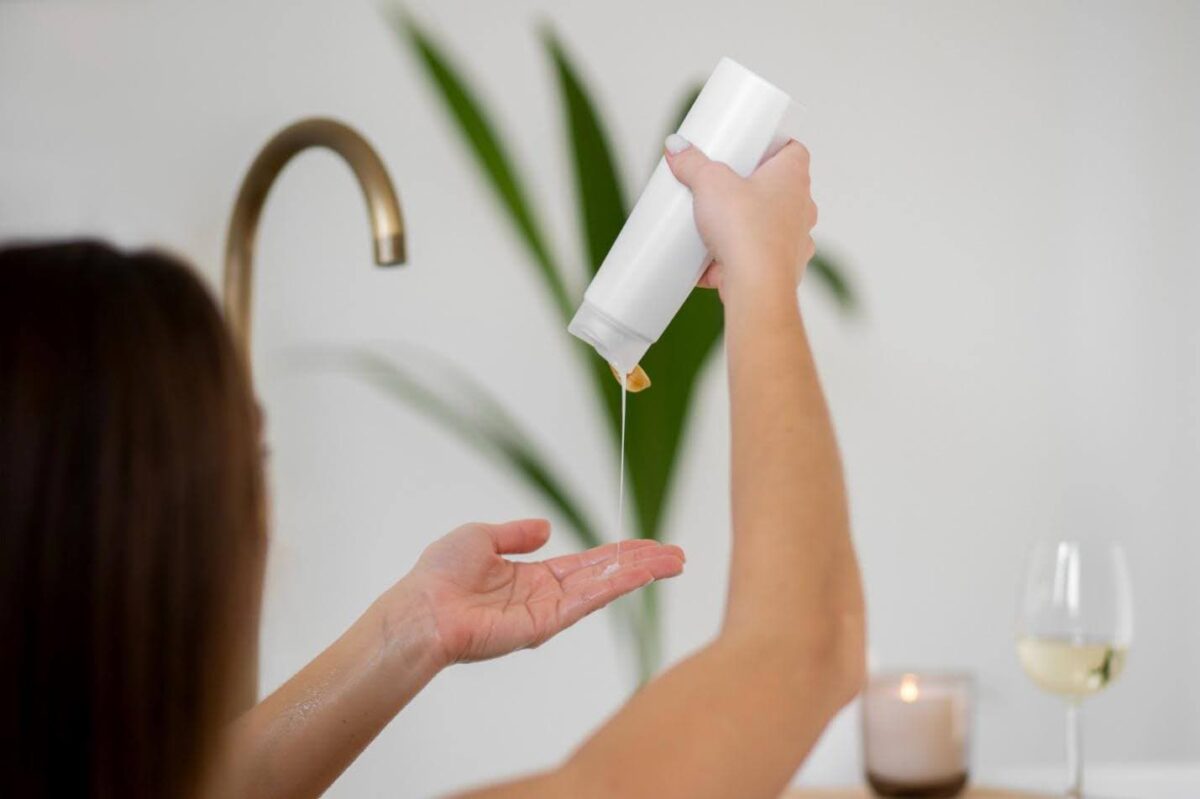Selecting the ideal shampoo for your hair type plays a pivotal role in preserving the vibrancy and allure of your locks. Amidst the plethora of choices saturating the market, pinpointing the optimal fit for your unique requirements can be daunting. This comprehensive guide aims to navigate you through crucial factors, facilitating an informed decision-making process to ensure your hair remains in peak condition, radiating its utmost beauty.
Understanding Your Hair Type
Before diving into the world of shampoos, it’s crucial to understand your hair type. Distinct hair types come with their requirements, and inappropriate shampoo may result in challenges like dryness, frizz, or excess oiliness. Here are the common hair types and their characteristics:
- Straight Hair. Straight hair tends to be sleek and lacks significant waves or curls. It can be fine or coarse, but the primary concern is often keeping it smooth and preventing oiliness at the roots.
- Wavy Hair. Wavy hair occupies the middle ground between straight and curly, shaping into subtle undulating waves. It can be prone to frizz, and the right shampoo will enhance its natural texture without weighing it down.
- Curly Hair. Well-defined curls or coils distinguish curly hair. It tends to be drier due to the shape of the strands, so hydration and moisture retention are essential.
- Coily Hair. Coily hair has tight curls or coils, often called “kinky” hair. This hair type requires extra moisture to prevent breakage and maintain its unique pattern.
Choosing the Right Shampoo
Now that you have a better understanding of your hair type let’s explore the factors to consider when choosing the right shampoo:
- Moisture Levels
- Dry Hair: Opt for moisturizing shampoos with ingredients like argan oil or shea butter to hydrate and nourish dry strands. Additionally, consider shampoos with “hydrating” or “replenishing” labels.
- Oily Hair: Look for clarifying shampoos that can remove excess oil without stripping the hair of essential moisture. Choose “balancing” or “oil control” products for a targeted solution.
- Ingredients
- Chemically Treated Hair: If you have color-treated or chemically processed hair, choose sulfate-free shampoos to maintain color and prevent further damage. Seek shampoos with added UV protection to shield your hair from the sun’s rays.
- Natural Ingredients: For a gentle and nourishing cleanse, consider shampoos with natural ingredients like aloe vera, tea tree oil, or chamomile. Steer clear of products containing harsh chemicals that have the potential to strip your hair of its natural oils.
- Scalp Health
- Dandruff or Flaky Scalp: Use anti-dandruff shampoos containing ingredients like ketoconazole or salicylic acid to address scalp issues. Look for “scalp care” or “anti-dandruff” products for targeted relief.
- Sensitive Scalp: To prevent irritation, opt for hypoallergenic shampoos with soothing ingredients like chamomile or aloe vera. Fragrance-free options are ideal for those with sensitive skin.
- Styling Needs
- Volume: Choose volumizing shampoos with biotin or collagen to add lift and body to fine or flat hair. Products labeled “volumizing” or “thickening” are tailored for this purpose.
- Smoothness: For frizzy or unruly hair, try smoothing shampoos containing ingredients like keratin or argan oil to tame and control. Look for shampoos labeled “smoothing” or “frizz control” for best results.
- Specialized Concerns
- Hair Loss: If you’re dealing with hair loss, consider shampoos with caffeine or ketoconazole to stimulate hair follicles. Look for products labeled as “hair growth” or “anti-hair loss.”
- Color Protection: For those with colored hair, use shampoos specifically formulated to preserve and enhance color. Look for “color-safe” or “color-protective” products to maintain vibrancy.
- Fragrance Preference
- Natural Scents: If you prefer natural scents, choose shampoos with essential oils or botanical extracts for a refreshing and subtle fragrance.
- Fragrance-Free: Opt for fragrance-free shampoos for individuals sensitive to scents to avoid any potential irritation.

Tips for Application
Proper application is essential for optimal results once you’ve selected the right shampoo. Follow these expert tips to make the most out of your shampooing routine:
- Wet Your Hair: Before applying shampoo, thoroughly wet your hair with lukewarm water. This helps open the hair cuticles, allowing the shampoo to penetrate effectively. It also ensures an even distribution of the product.
- Use the Right Amount: Pay attention to the recommended amount on the product label. Too much shampoo can lead to product buildup, making your hair feel heavy and greasy. A quarter-sized amount is generally sufficient for most hair lengths.
- Focus on the Scalp: Concentrate the shampoo on your scalp rather than the length of your hair. The scalp produces natural oils, and cleaning it properly is crucial for overall hair health. Use your fingertips to massage the shampoo into your scalp in gentle, circular motions.
- Choose the Right Water Temperature: While a hot shower may be relaxing, hot water can strip your hair of essential oils, leaving it dry and brittle. Opt for lukewarm water to maintain the natural moisture balance of your hair.
- Rinse and Repeat (If Necessary): Thoroughly rinse your hair to remove all traces of shampoo. In most cases, one round of shampooing is enough. However, a second round may be beneficial if your hair tends to be oily or if you use a lot of styling products.
- Use a Clarifying Shampoo Occasionally: Over time, hair products and environmental pollutants can build up on your hair. Consider using a clarifying shampoo once a month to remove residue and keep your hair feeling fresh and clean.
- Follow with Conditioner: After shampooing, follow up with a suitable conditioner to restore moisture and maintain the health of your hair. Apply conditioner from mid-length to the ends, avoiding the scalp if you have fine or oily hair.
- Consider a Weekly Deep Conditioning Treatment: Treat your hair to a deep conditioning treatment once weekly to provide extra nourishment and repair. Look for products with ingredients like keratin or argan oil for an added boost of hydration.
- Pat Dry, Don’t Rub: Gently pat your hair dry with a soft towel after washing. Avoid rubbing vigorously, as wet hair is more prone to breakage. If possible, let your hair air-dry to minimize heat damage.
- Adjust Based on Hair Needs: Your hair’s needs can change with the seasons, lifestyle changes, or hair treatments. Be flexible in your shampooing routine, adjusting the frequency and type of products based on your hair’s condition.
By incorporating these tips into your shampooing routine, you can enhance the effectiveness of your chosen shampoo and promote overall hair health. Remember that a consistent and thoughtful approach to hair care yields the best results over time.
Conclusion
Choosing the right shampoo is a personal journey that involves understanding your hair type and its unique needs. By considering factors like moisture levels, ingredients, scalp health, styling needs, and washing frequency, you can make an informed decision that will contribute to your hair’s overall health and appearance. Remember, a good hair care routine starts with the right shampoo tailored to your requirements.
